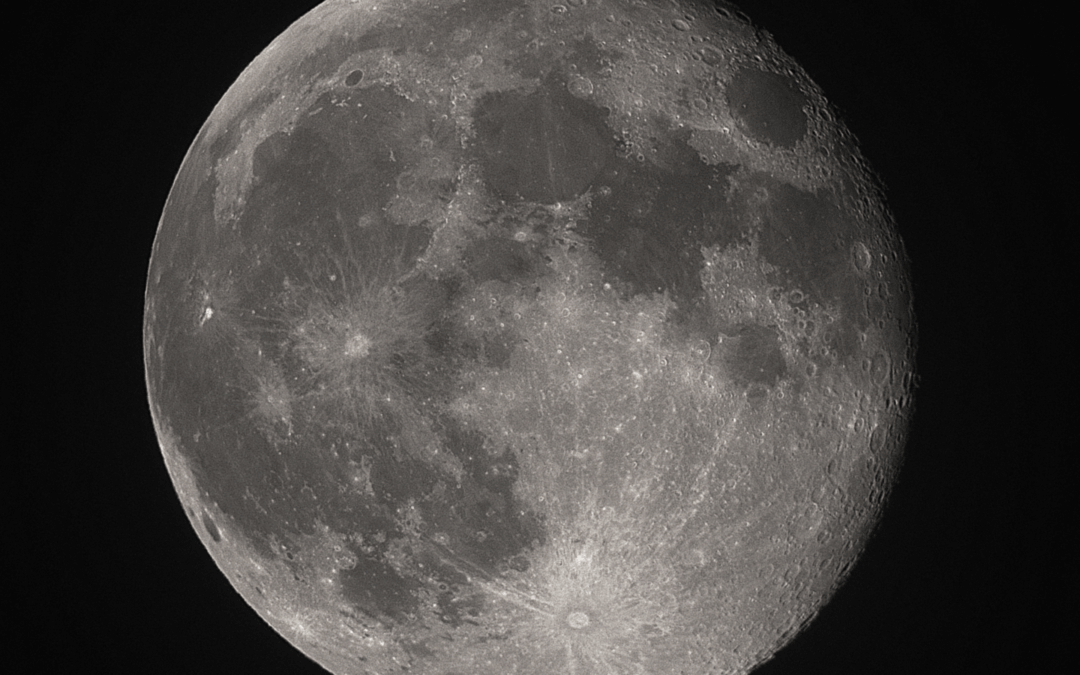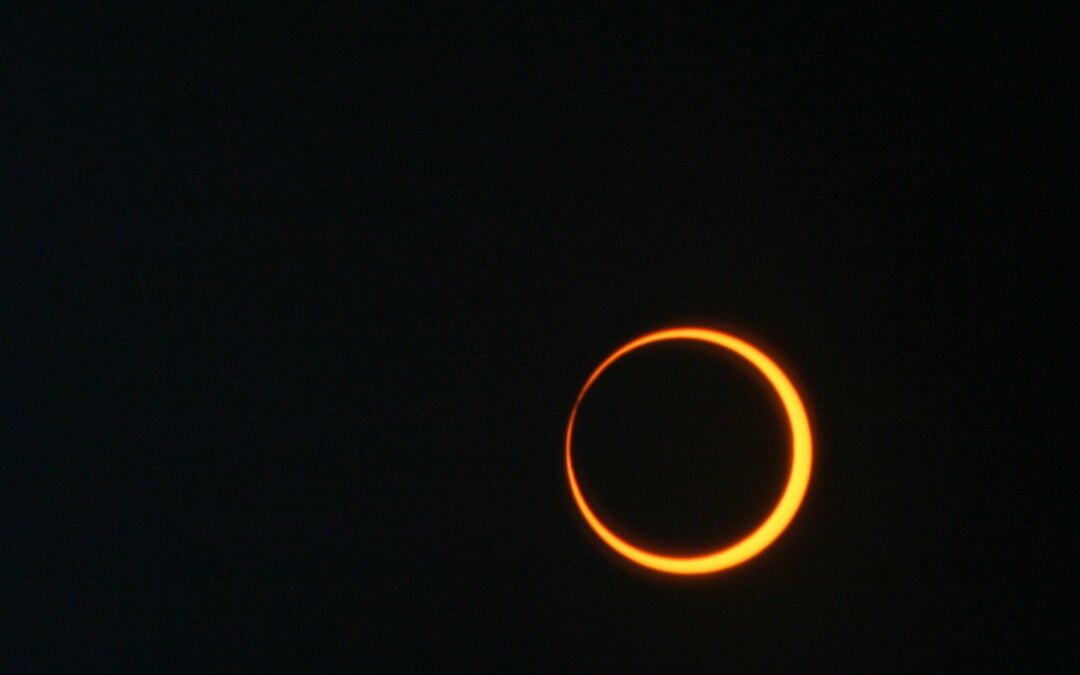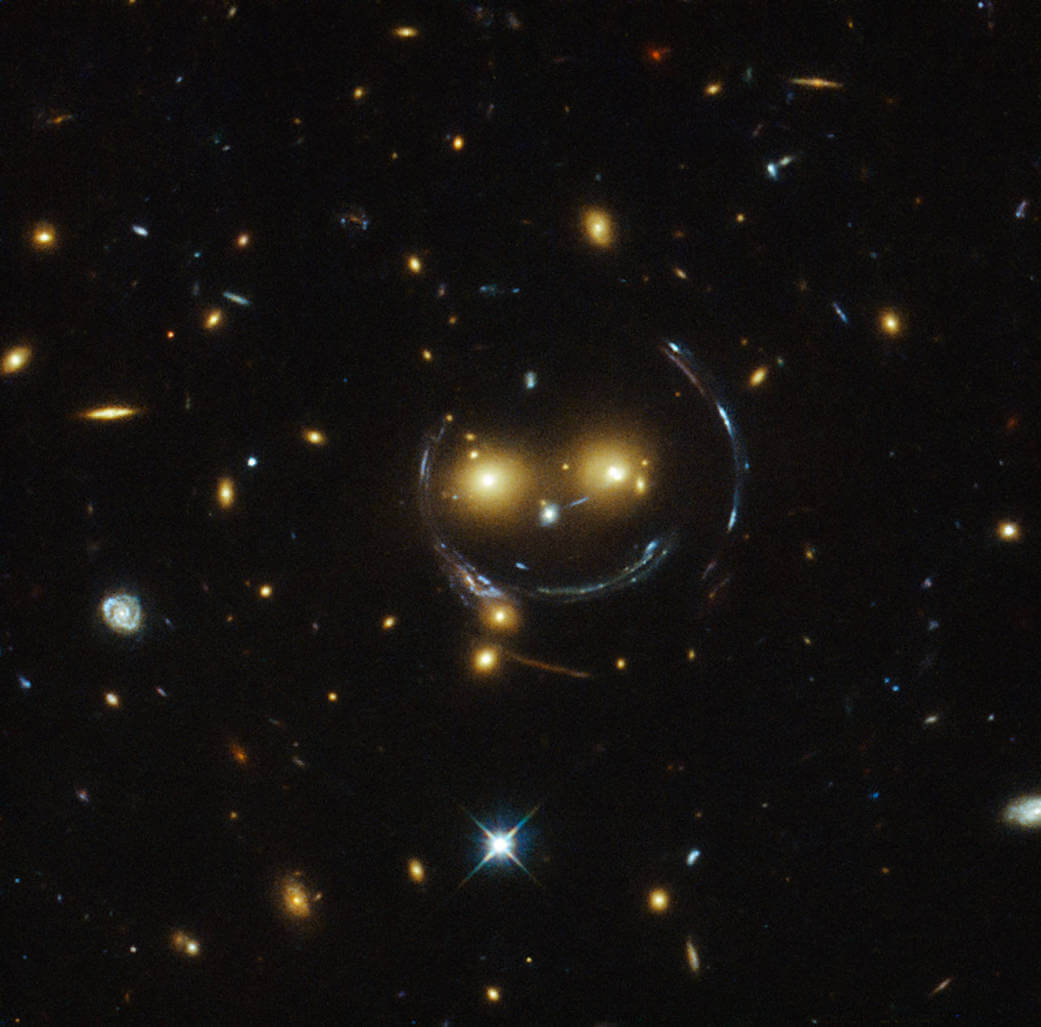This summer was an exciting time for comets – several outbursts and even a newly discovered comet have graced the skies. To keep your cometary momentum going, join Unistellar and the AFA (Association Française d’Astronomie) in observing comet 103P/Hartley from September 13 – October 25!
Comet 103P/Hartley, also known as Hartley 2, is a short period comet with an orbit that takes 6.5 years to complete. This orbit extends from the asteroid belt to within the orbit of Mars! Hartley 2 last flew by Earth in 2017, but it was still quite far from our planet – now we have another chance to get up close and personal.
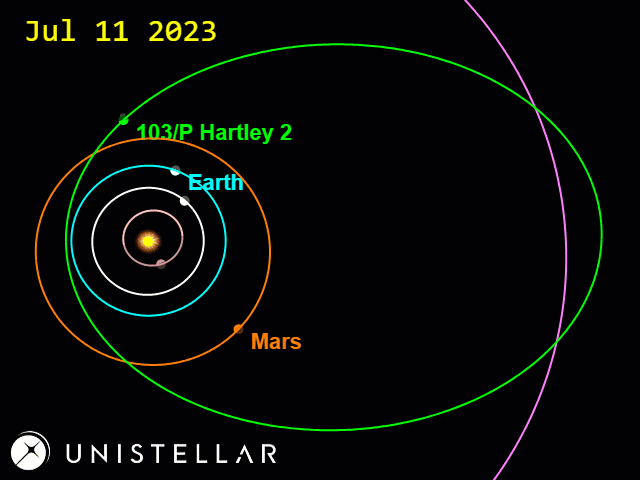
The orbit of Comet Hartley 2. Credit: Tony Dunn
The closest look at this comet occurred via a visit from NASA’s Deep Impact (EPOXI) spacecraft in 2010, when it flew only 694 km away from Hartley 2. The flyby revealed a small, peanut shaped comet about 1.5 km in diameter. For comparison, most comets are around 10 km wide, although they can be larger – the famous Hale-Bopp is about 60 km at its widest, while the biggest comet known is 120 km wide! Regardless, don’t underestimate Hartley 2 – this small but mighty comet is considered hyperactive, meaning it releases more gasses than is typical for comets its size. Observations have also revealed that it doesn’t have a uniform makeup – water vapor spews preferentially from one region of the comet, while carbon-dioxide is expelled from another.
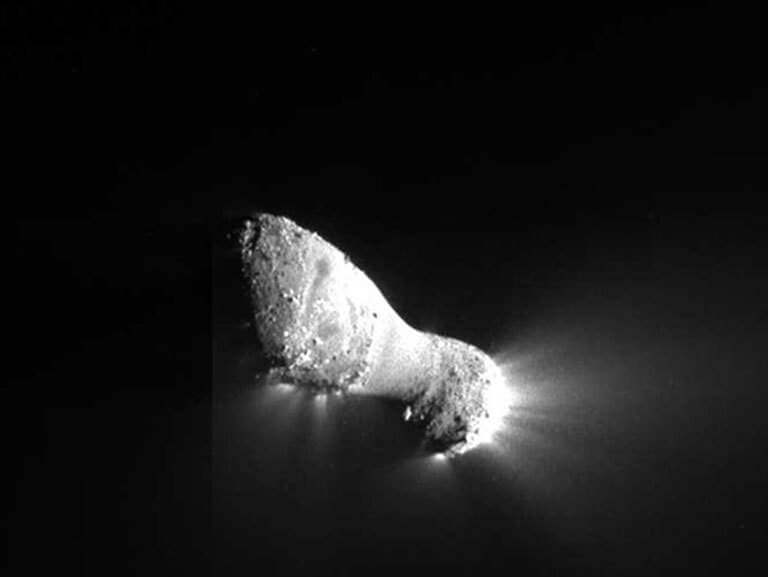
An image of Hartley 2 taken by Deep Impact during its flyby. Credit: NASA/JPL-CalTech/UMD
These unusual features make comet Hartley 2 the perfect target with which to welcome in Autumn alongside Unistellar and AFA. Hartley 2 will be passing closest to the Earth on September 26, when it will be just 0.38 Earth-Sun distances away. So join in the fun and observe any time from now through October 25. Current estimates show that Hartley 2 will be as bright as 8th magnitude come October 4, so be sure to catch this comet at its finest! It will fly its nearest to the Sun a week later, on October 12, offering an increased chance to catch an outburst or other activity.
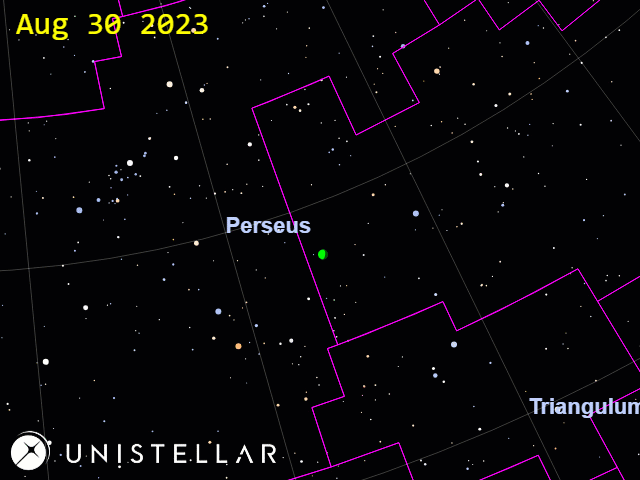
This animation shows Comet Hartley 2’s location in the sky over the coming months. Credit: Tony Dunn
Do You Want to Join the AFA Campaign and Observe Hartley 2?
Your observations will help astronomers with Unistellar and AFA obtain a light curve for Hartley 2 that will be submitted to the Minor Planet Center. This data will show how predictions compare to reality and help scientists analyze any activity that observers happen to see. Comet 103P/Hartley is easy to observe with your Unistellar app, but you can find more about its sky location here. From France, it will be above the horizon each night until dawn, although it will rise later after nightfall as time goes on.
This comet is in the Unistellar App Catalog, so simply search the comet’s name in your App and click GoTo to visit Hartley 2. To make a Science observation, simply visit the Comets Tutorial Page and follow the Observation section instructions for 1A: The target is in the Unistellar app’s database.
In the Recording field be sure the following information is entered:
Record duration : 20min
Exposure time : 3971ms
Gain : 25db
When you are done, don’t forget to submit a Comet Observation Report. Happy Comet Watching!
Further readings
Unistellar Community Included In Multiple Scientific Papers
Did you know Unistellar Citizen Astronomers are often cited in published scientific papers? Find out how you can contribute too!
What Are the Names of All the Full Moons in 2024?
Discover the enchanting names of the full moons in 2024. Delve into the unique character of each lunar spectacle and embrace the allure of the night sky.
New Unistellar App Update: Version 3.0
The latest Unistellar App Update, version V3.0, is now live. Explore a smooth stargazing experience !
What to Observe This November: Open Star Clusters and More
These Halloween deep-sky objects will add some light to those dark, spooky nights. Treats, tricks, and telescopes await!
When Is the Next Solar Eclipse, and How to Observe It With a Unistellar Telescope
An annular solar eclipse is visible from the Americas on October 14. Learn how to witness the Ring of Fire with your Unistellar Telescope!
Halloween Observing Guide: Spooky Deep-Sky Objects
These Halloween deep-sky objects will add some light to those dark, spooky nights. Treats, tricks, and telescopes await!

